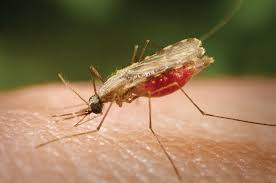Malaria, causes, invention of its cure, major symptoms and modern Orthodox and home made remedies

Malaria: Overview
Malaria is a life-threatening disease caused by Plasmodium parasites. These parasites are transmitted to people through the bites of infected female Anopheles mosquitoes. Malaria is most prevalent in tropical and subtropical regions, particularly in Africa, South Asia, and parts of South America.
Causes of Malaria
Malaria is caused by five types of Plasmodium parasites:
Plasmodium falciparum (most dangerous, causes severe malaria)
Plasmodium vivax
Plasmodium ovale
Plasmodium malariae
Plasmodium knowlesi (rare in humans)
The life cycle of malaria begins when an infected mosquito bites a human, injecting the parasites into the bloodstream. The parasites travel to the liver, where they multiply before returning to the bloodstream to infect red blood cells, leading to the symptoms of the disease.
Major Symptoms of Malaria
Malaria symptoms usually appear 10–15 days after being bitten by an infected mosquito. Common symptoms include:
Fever (which comes in cycles or waves)
Chills and shivering
Sweating
Headaches
Muscle pain
Fatigue
Nausea and vomiting
Anemia (due to destruction of red blood cells)
Jaundice (yellowing of the skin and eyes in severe cases)
Severe malaria, primarily caused by Plasmodium falciparum, can result in:
Seizures
Confusion or coma
Organ failure (including kidney failure)
Respiratory distress
Death, if untreated
Invention of the Cure for Malaria
The search for a cure for malaria has a long history:
Quinine: Quinine, derived from the bark of the cinchona tree, was the first effective treatment for malaria. It was used by indigenous people in Peru before being brought to Europe in the 17th century. Quinine remained the primary treatment for malaria until the development of synthetic alternatives.
Chloroquine: During World War II, synthetic drugs such as chloroquine were developed as more effective and less toxic alternatives to quinine. Chloroquine became widely used in the 20th century but has since faced resistance from Plasmodium falciparum in many parts of the world.
Artemisinin: In the 1970s, Chinese scientist Tu Youyou discovered artemisinin, a compound derived from the sweet wormwood plant (Artemisia annua). Artemisinin-based combination therapies (ACTs) are now the most effective treatment for malaria, particularly against Plasmodium falciparum. In 2015, Tu Youyou was awarded the Nobel Prize in Physiology or Medicine for her discovery.
Modern Orthodox Medical Treatment of Malaria
Artemisinin-Based Combination Therapies (ACTs): This is the most effective treatment for malaria. ACTs combine artemisinin with another antimalarial drug to prevent resistance and increase effectiveness. Commonly used ACTs include artemether-lumefantrine and artesunate-mefloquine.
Chloroquine: In areas where Plasmodium vivax is dominant or where P. falciparum is still sensitive, chloroquine can be used. However, chloroquine-resistant malaria is widespread.
Primaquine: Used to treat and prevent relapses of Plasmodium vivax and Plasmodium ovale, which can remain dormant in the liver for years.
Prevention through Prophylaxis: Travelers to malaria-endemic regions may take antimalarial drugs as preventive measures. Common preventive medications include doxycycline, mefloquine, and atovaquone-proguanil.
Vaccination: The RTS,S/AS01 (Mosquirix) vaccine is the first malaria vaccine approved for use in children in endemic regions. It provides partial protection against Plasmodium falciparum malaria.
Homemade and Traditional Remedies for Malaria
While orthodox treatment is critical for managing malaria, traditional and homemade remedies are sometimes used in endemic areas, particularly where access to healthcare is limited.
Herbal Teas:
Artemisia annua (Sweet Wormwood): This plant contains artemisinin and has been traditionally used in herbal teas to alleviate malaria symptoms.
Neem leaves: Often boiled into tea, neem leaves are believed to have antimalarial properties in some cultures.
Papaya leaves: These are also used in some places to relieve malaria symptoms, as they are thought to boost immunity.
Citrus Juices:
Lemon, orange, and lime juices are commonly used to help reduce fever and boost hydration in individuals suffering from malaria.
Ginger:
Ginger tea, with its anti-inflammatory and immune-boosting properties, is sometimes consumed to alleviate symptoms such as nausea, headaches, and fever.
Garlic:
Some traditional healers
recommend consuming raw garlic or garlic-infused water for its potential immune-strengthening effects.
Cold Compresses:
To manage fever, cold compresses are frequently applied to the head and body in rural settings.
Limitations of Homemade Remedies
It’s essential to note that while some homemade and traditional remedies may offer symptomatic relief or help strengthen the immune system, they do not cure malaria. Malaria requires proper medical treatment, particularly with ACTs or other antimalarial drugs. Relying solely on traditional remedies without medical intervention can lead to serious complications or death.
Conclusion
Malaria remains a significant global health challenge, particularly in developing countries. Effective treatment involves the use of modern medicines like ACTs and, in some cases, vaccines for prevention. While homemade remedies may help ease symptoms, they cannot replace the lifesaving treatments provided by orthodox medicine. Ongoing research and global health efforts aim to reduce the burden of this disease and ultimately eradicate it.



